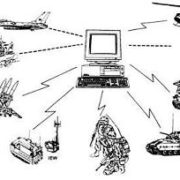 Should robots walk or roll? While the answer to this question is obvious for certain applications, it has implications for the entire robot industry, and society as a whole.
Should robots walk or roll? While the answer to this question is obvious for certain applications, it has implications for the entire robot industry, and society as a whole.
Colin Angle, CEO of iRobot, has seen the future of robots, and they aren’t walking. In an interview with Pilots Presence (reprinted in IEEE Spectrum), Angle criticized the millions of dollars spent on developing bipedal robots. These systems often require large groups of support personnel during operation, and have a Mean Time To Failure of 45 minutes. Angle compares these delicate, slow-moving, humanoid systems to the robust iRobot Warrior UGV, which uses treads. Watch this video of the Warrior 710 running rampant over rocks and up stairs, and you will understand his preference for non-legged robots. Wheeled/treaded robots are cheaper, simpler, and more rugged.
However, bipedal robots also have their virtues. As described in Gait Generation for Legged Robots (David Wettergreen and Chuck Thorpe, Carnegie Mellon University), “Legged robots are uniquely advantageous to autonomously traverse extreme terrain because of their ability to isolate their body from terrain irregularities, avoid undesirable footholds, regulate their stability, and achieve energy efficiency.” In other words, they can go where no wheeled robot can go.
There are a lot of places wheeled robots can’t go. Slate’s states that up to 80% of land mass isn’t accessible by wheels. Future tense profiles roboticist Dennis Hong, who maintains that legged robots are necessary to navigate this vast wheel-hostile area. He argues that since we live in an environment built for people, robots need to walk like people. “Legs are king.”
Anyone who has spent time in a wheelchair will tell you that the world as a whole is not a friendly place to wheels. The huge public effort to ensure wheelchair access has helped, but there are still significant limitations. In fact, one of Hong’s arguments for bipedal robots is that they will lead to development of better prosthetics.
Hong’s comment about the environment suggests another way of stating this problem. Are we going to adapt the human environment to robots or robots to the human environment? Developing robots with humanoid forms will increase their complexity and expense. On the other hand, ensuring our public spaces, homes, and businesses are accessible to wheeled robots will also be costly. Which is the most logical course? If you are building a robot for a large-scale commercial application, which eventuality should you plan for?
Angle states that the development of impractical, inefficient humanoid robots is an exercise of “cool over utility.” This phrase could describe Hong’s Robocup, a tournament for soccer-playing robots. This application has little immediate practical value, but isn’t your interest piqued by it?
This is why, except for applications dedicated to spaces specifically designed for wheeled unmanned systems, I suspect that legged robots will eventually win out. A lot of people won’t care about the engineering challenges, or the economic forces driving the robotics industry. When they see a robot that walks like a person, they will think, “That’s cool. I want one.”
Until this controversy is sorted out, robot developers will simply have to decide on modes of locomotion on an application by application basis. Maybe, they’ll build an ostrich-like robot like the one that DARPA is working on, or maybe something like the spider robot that is being developed to deal with hazardous situations. In the meantime, I suggest we follow Angle’s lead and make systems that are practical, robust, as well as economic, and leave the “cool” stuff to the other guys.







I think we have to look at each case and decide what makes economic sense. As noted, bipedal robots may be much too complex and expensive for many applications.
why not have modular robots that could share control systems and be multipodal or wheeled as needed? That would follow the human model where we have created wheels (or wings) for ourselves as needed.